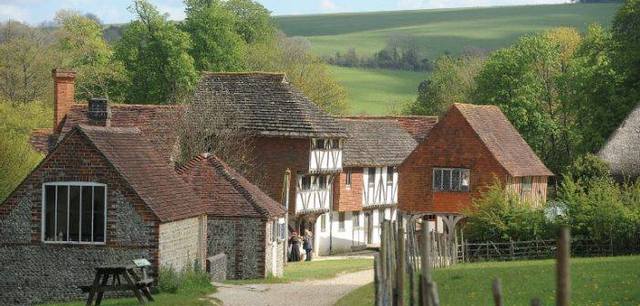
Immerse yourself in more than 2,000 years of British history at some of the finest open-air museums in the world.
* Originally published in May 2017.
The past is a foreign country, but luckily it’s an easy place to visit. Britain has a number of fabulous open-air museums—visiting them is like jumping in a time machine and traveling to a bygone era. They allow us to explore the lives of ordinary people: to wander their homes, view their places of work, see what they bought in shops, even try on their clothes, and taste their cooking. Join us and travel to the past with this selection of Britain’s best open-air museums.
Read more
Beamish, County Durham
Take a day to visit northeast England more than 100 years ago: Beamish showcases Edwardian England, a time when the country was turning into the one we know today. Ride a tram from the visitors center to the highlight of the Beamish Museum, a typical 1900s street, which has been created using relocated buildings from around the region, brought to Beamish and painstakingly rebuilt brick by brick.
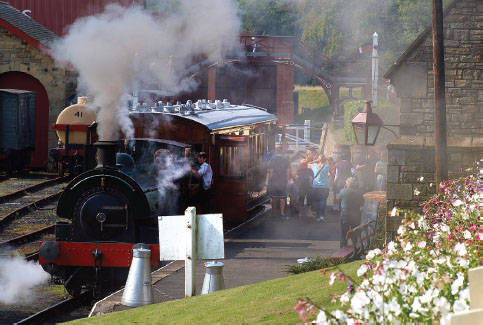
PHOTOS COURTESY OF BEAMISH MUSEUM
Visit Herron’s Bakery to watch bread being made, and perhaps buy a fresh loaf to take home. Wander the houses of Ravensworth Terrace; No. 3 was used as a dentist’s surgery, a necessary requirement given the tasty treats on offer at the sweet shop. I challenge you to walk past its door without buying any cinder toffee or lemon drops! The nearby colliery and pit village shows the industry that this part of England relied on at the turn of the 20th century. Take one of the accompanied tours down the drift mine to see the harsh realities of working life.
Beamish is branching out too—newer sections of the site cover the 1820s and the 1940s, although it’s still the Edwardian town and pit village that are the showpieces of the museum. beamish.org.uk
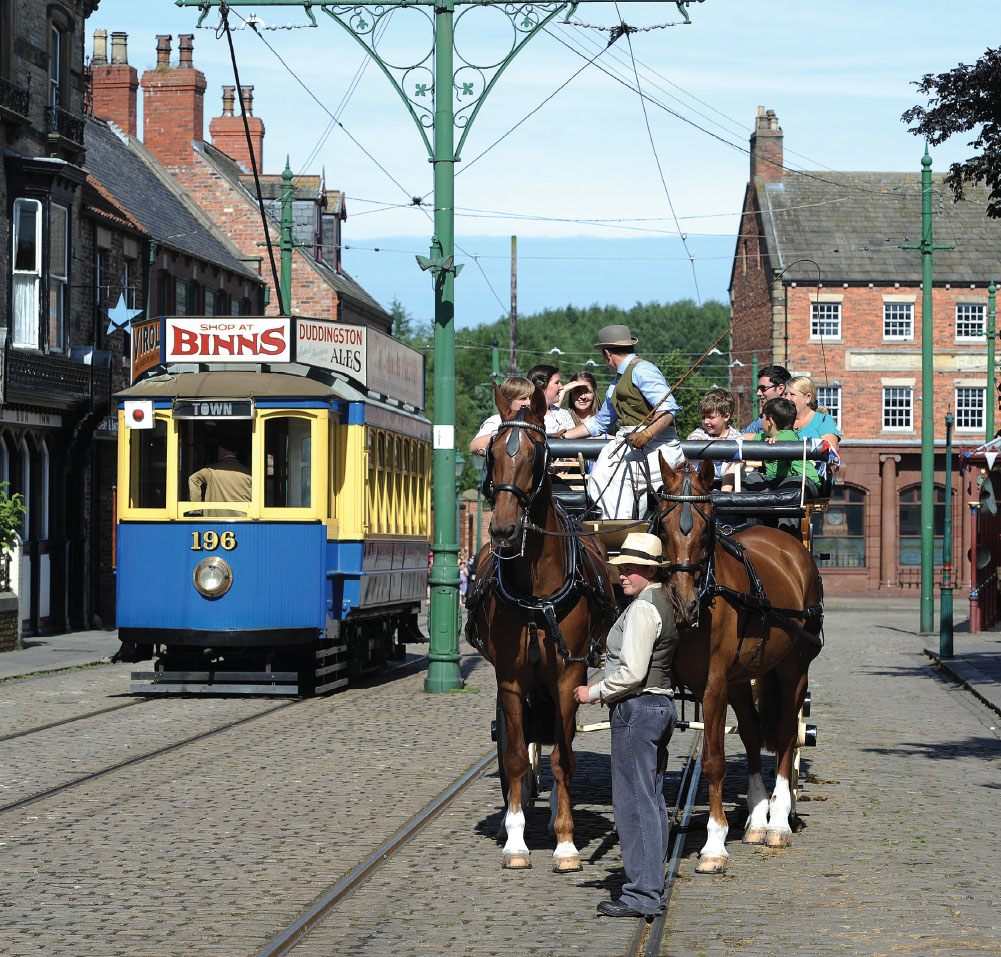
ake the tram from the visitors center back into 1906 and the Edwardian town and pit village typical of England’s northeast. It’s baking day in one of the pit cottages.
In the area? Go to the branch of the National Railway Museum in Shilden to find out how the railways transformed the lives of ordinary people in the northeast.
Weald and Downland Open Air Museum, Chichester
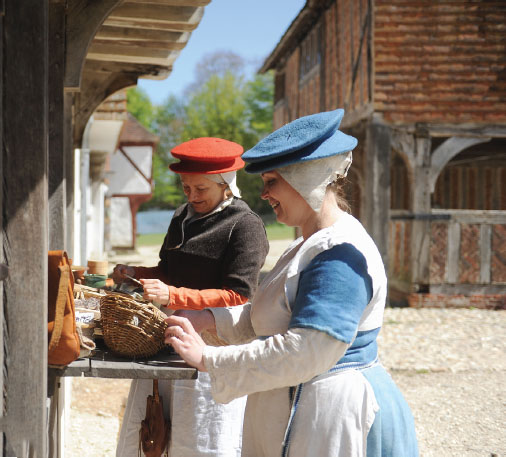
While some museums focus on one particular era, the Weald and Downland Museum is a collection of historic buildings spanning seven centuries. From homes and farmyard barns to a schoolhouse and a market hall, the museum hosts more than 50 relocated buildings from across southern England, all of which were threatened with destruction before the museum rescued them. Perhaps the oddest is the corrugated iron church dating from 1908. It’s small, intimate and quite possibly sweltering on hot days.
Having buildings of different time periods allows a side-by-side comparison. Particularly fascinating are the Bayleaf and Pandean houses; both are of similar status, but separated by 100 years, and the development in living spaces between the two is staggering. Here you can physically see the move away from medieval halls to the beginnings of a modern floor plan.
A highlight of most visits to Weald and Downland is the chance to view one of the many demonstrations that take place, from domestic chores like cooking, cleaning and spinning thread to rural crafts like blacksmithing and scything. I hope that they are making one of the scrumptious fried “chewits”—a delicious pastry filled with vegetables! wealddown.co.uk
In the area? Visit Amberley Museum and Heritage Centre, another open-air museum in West Sussex, this one focusing on industrial heritage.
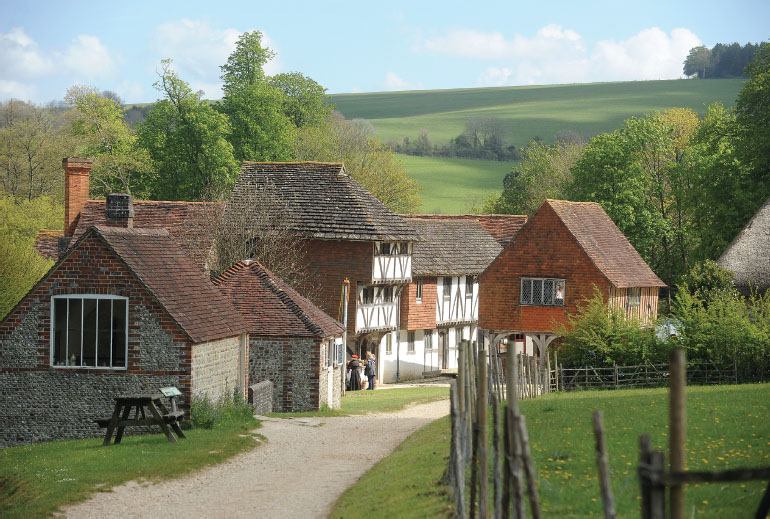
At the Weald and Downland Open Air Museum, buildings of every period in history back to the 1300s have been sourced across southern England and painstakingly relocated. Rural crafts and domestic tasks are brought to life by costumed interpreters and skilled artisans.[/caption]
Auchindrain, Argylll, and Bute
Unlike in Beamish, the buildings that constitute the open-air museum at Auchindrain remain where they were built. The random scatter of 22 simple preserved buildings is set in a landscape that has changed relatively little in centuries. The village was typical of the farming townships that existed throughout the Scottish Highlands in 1700, but that way of life was devastated by the Highland Clearances that occurred over the next 200 years. This is Outlander country.
Auchindrain, Argyll, and Bute Unlike in Beamish, the buildings that constitute the open-air museum at Auchindrain remain where they were built. The random scatter of 22 simple preserved buildings is set in a landscape that has changed relatively little in centuries. The village was typical of the farming townships that existed throughout the Scottish Highlands in 1700, but that way of life was devastated by the Highland Clearances that occurred over the next 200 years.
Auchindrain was the only township to survive the upheaval largely intact. It provides an insight into how people lived and worked during a difficult and troubled period of Scottish history. Wander freely and see where the animals grazed and where crops were grown. The houses are furnished with everyday objects, and you’ll find old farming tools and implements in the barns. What you see creates a powerful picture of the lives of ordinary people.
There’s nothing staged or glossy here, no teams of reenactors in period costume to guide you through the exhibits; instead, use your imagination to picture the inhabitants and their hard graft. Auchindrain is a window into the Highlander way of life which has long gone.
auchindrain.org.uk
In the area? Visit Inverary Jail, where unlucky residents of Auchindrain would have been taken if they broke the law.
St. Fagans National History Museum, Cardiff
St. Fagans also has a broad chronological range of buildings, this time from the 16th century to the 20th, but here the focus is unashamedly Welsh. More than 40 buildings from around the country provide a record of Welsh architecture and life, and as part of the National Museum of Wales collection, it’s free to visit.
For the most ancient experience that St. Fagans offers, head to St. Teilo’s Church. It stood for 900 years at Llandeilo Tal-y-Bont in West Glamorgan before it was transported to St. Fagans and carefully rebuilt. Given such a long history, it was decided to display the church as it stood in one particular period; visitors see the church as it was in 1530, complete with bright wall paintings on white walls. Other highlights include the Tudor trader’s house, a row of ironworker cottages and Derwen Bake House, which still sells the bread freshly baked in its ovens.
Finally, don’t neglect to view St. Fagans Castle itself, a 16th-century manor house donated to the people of Wales by the Earl of Plymouth. The museum is based in the grounds of the castle, although much of the castle’s gardens remain and they offer an excellent place to have a picnic lunch.
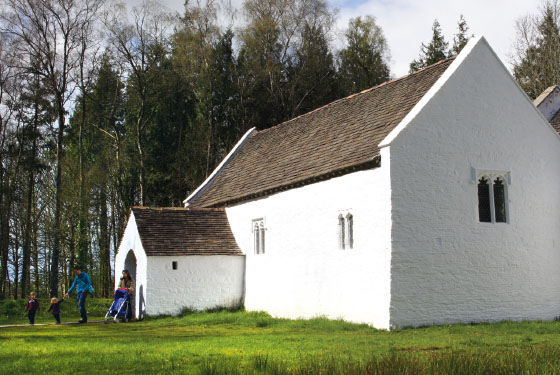
The nave and chancel of St. Teilo’s Church date back to the 1100s. The north and south chapels were added in the 14th century. The church was relocated to St. Fagans in 1985. It has been refurbished and furnished as it would have appeared in 1530, with bright paintings covering all the whitewashed walls. DANA HUNTLEY
In the area? Try another free National Museum of Wales site at Big Pit National Coal Museum in Blaenafon.
Yorkshire Museum of Farming, York
Unlike the other open-air museums on our list that are dedicated either to a specific time period or geographical area, the Yorkshire Museum of Farming focuses on one aspect of life in the past: the production of food. Here you can explore the lives of farmers throughout history, how mechanization has changed things and how the Women’s Land Army helped Britain during two world wars.
Keep an eye out for Jeffrey the Toggenburg goat, who is the mascot of nearby RAF 609 Squadron. You’ll probably find him near the Livestock Gallery, which examines how domesticated animals have kept us fed and clothed. As well as finding out about the animals, you’ll view a milking parlor and blacksmith’s workshop. Finally, don’t miss the reconstructed veterinary surgery—all the equipment there belonged to local vet Alf Wight, but you’ll recognize him better by his pen name, James Herriot. www.murtonpark.co.uk
In the area? Head into the center of York and the Jorvik Viking Centre for a glimpse into the lives of the notorious Norse raiders.
Chiltern Open Air Museum, Buckinghamshire
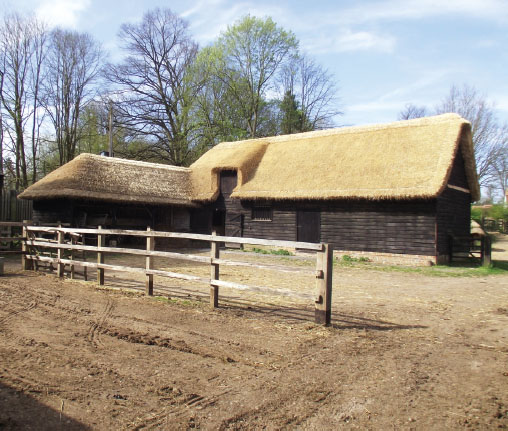
COURTESY: CHILTERN OPEN AIR MUSEUM
It’s hard to believe that the Chiltern Open Air Museum sits less than two miles from the M25. The modern traffic jams seem far away as you explore the reconstructed Iron Age roundhouse or medieval barn; although the contemporary world creeps a little closer as you enter the prefabricated house, one of the tens of thousands built to house people after World War II. This particular prefab originally sat in Amersham and was home to the Brant family—some of their family photos still hang on the walls. Other highlights include the public toilet which provided relief for commuters in Caversham at the turn of the 20th century. It’s still in working order, and you can see the penny fee slots on the cubicle doors—inspiration for the quaint British phrase “I’m off to spend a penny.”
Don’t forget to have a look around the Victorian farm. If it looks familiar, it’s probably because you saw Lady Edith helping out here during the second season of Downton Abbey. Indeed, the museum may have other places you vaguely recognize—the casts of Call the Midwife and Midsomer Murders have also shot scenes here.
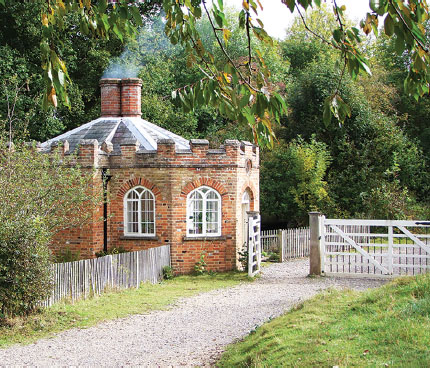
From an Iron Age roundhouse to a 1940s postwar prefab, the Chiltern Open Air Museum eclectically spans the centuries portraying English life.
In the area? Little more than a mile away is Milton’s Cottage, home to Paradise Lost writer John Milton, now an interesting little museum dedicated to his works.
Blists Hill Victorian Town, Shropshire
Blists Hill gives a glimpse into the lives of ordinary people when Britain was at the peak of her powers, Queen Victoria was on the throne and Britannia ruled the waves. Part of the Ironbridge Gorge collection of 10 museums, Blists Hill is the one that focuses less on industrialization and engineering, and more on society and everyday life.
The first building you’ll come across is Lloyds Bank, which originally stood in nearby Walsall before being relocated to Blists Hill. Exchange some of your modern cash for pre-decimal shillings and pence. Then wander the streets and use your coins to purchase whatever takes your fancy. The fish and chips on Canal Street come highly recommended, as does a pint at the New Inn. In good weather, make use of the fairground. If the skies threaten rain, take a trip to the photographic studio and don Victorian attire for a session in front of one of the newfangled cameras of the 1860s.
As you’d expect in Ironbridge Gorge, there is still a substantial nod to industry. Visit on a Wednesday morning and you’ll see red-hot metal being poured in the iron foundry; outside that time you can still explore the blast furnaces and engines of the ironworks.
In the area? Aside from the other Ironbridge Trust museums, try the Black Country Living Museum—another place looking at life in the Midlands past.
* Originally published in May 2017.





Comments